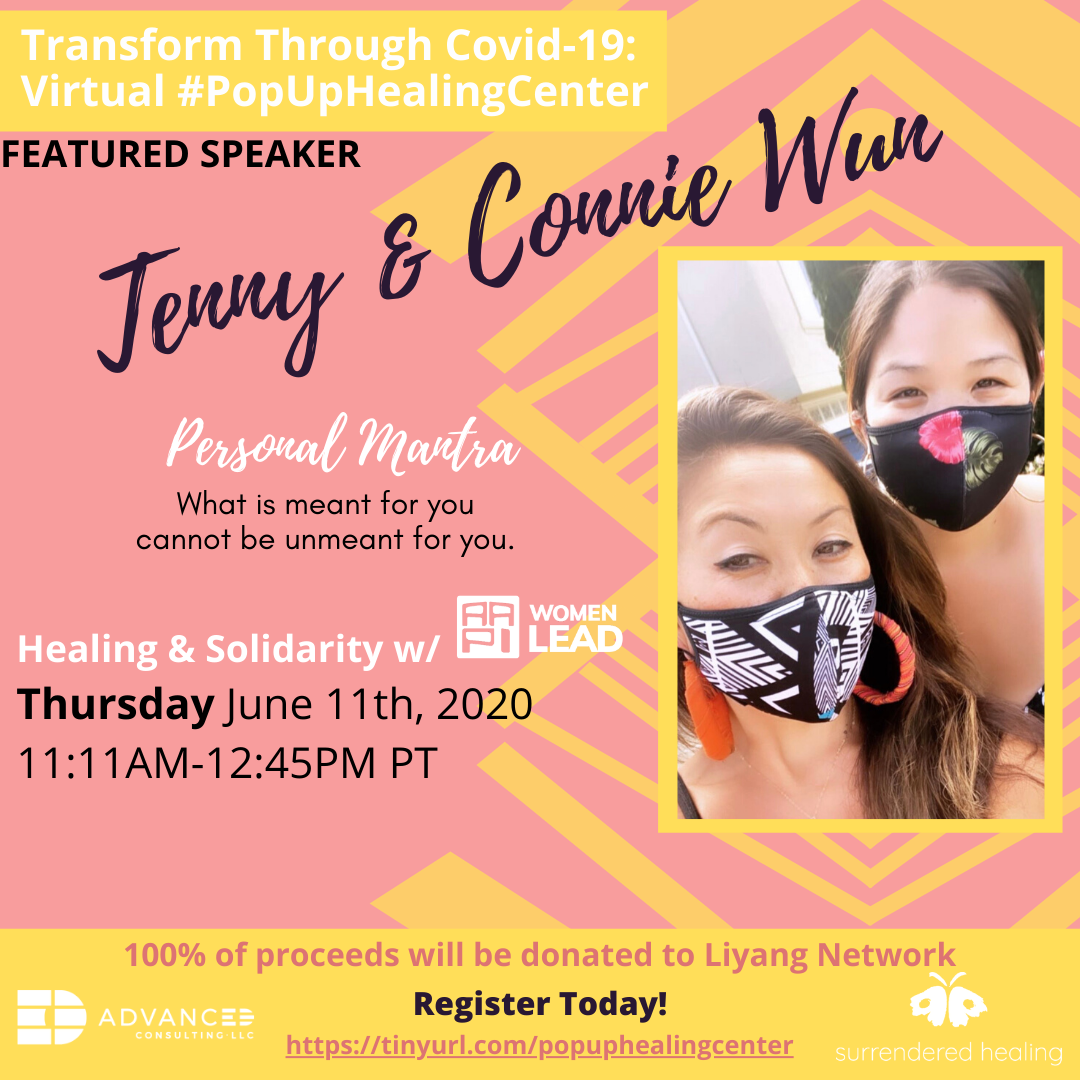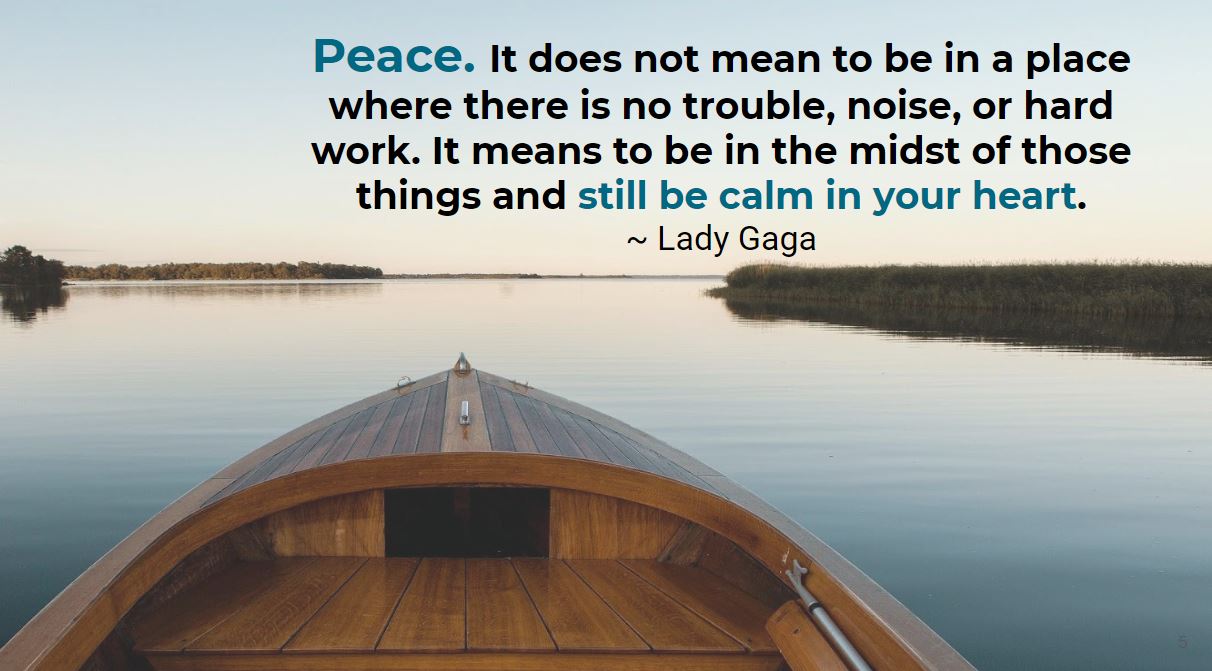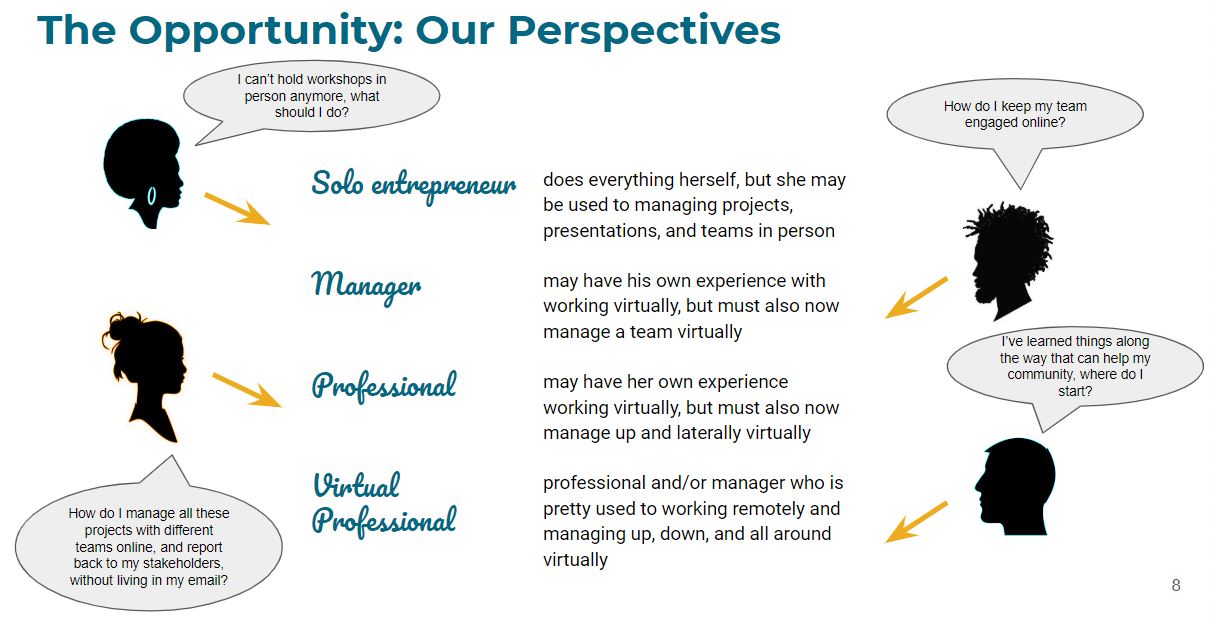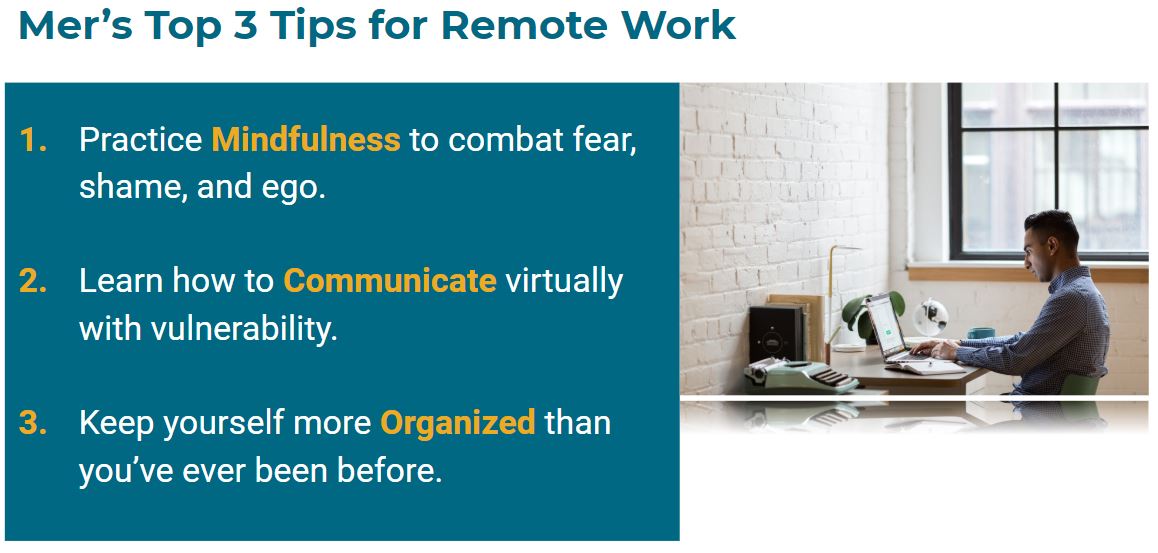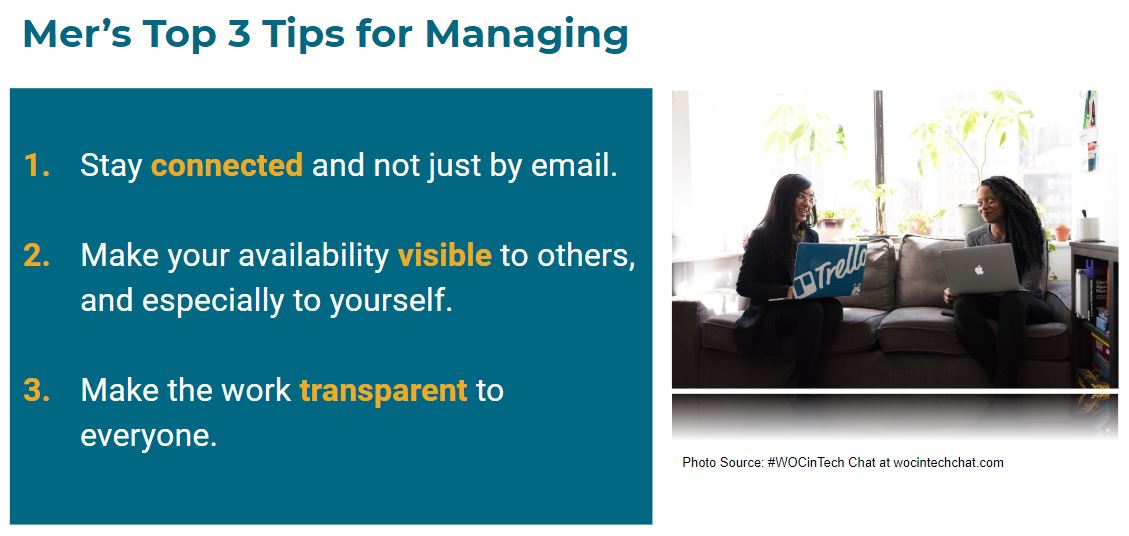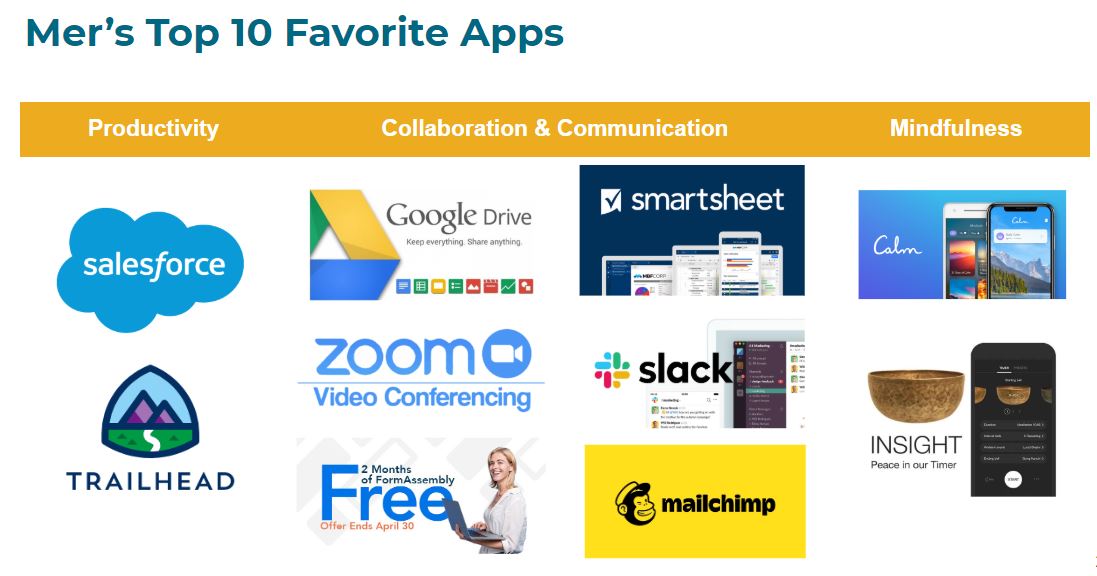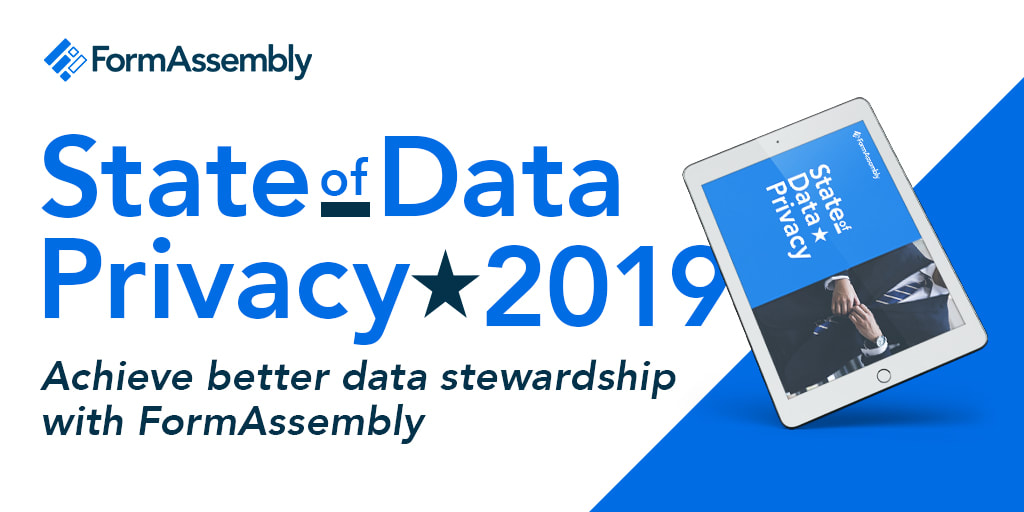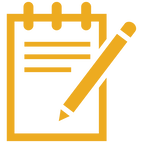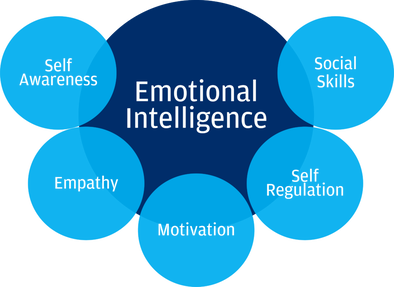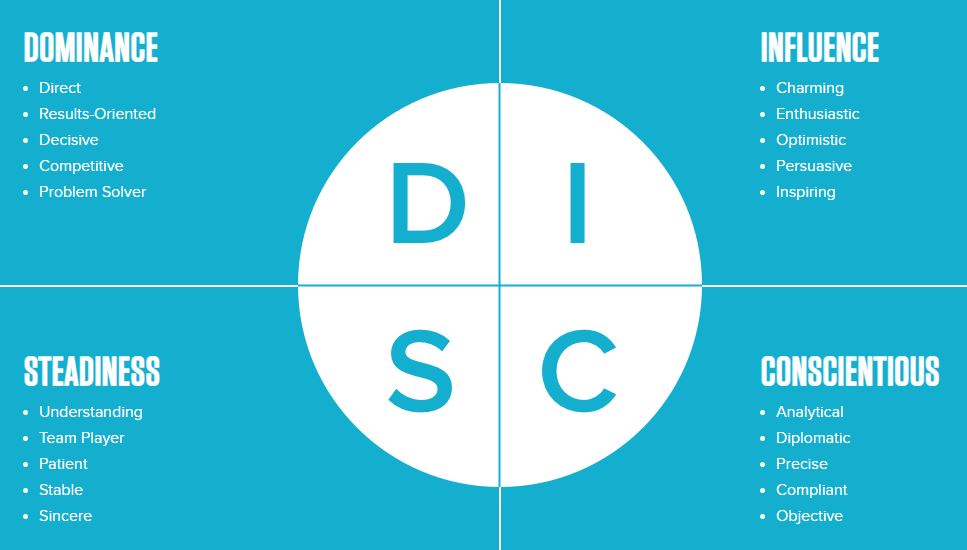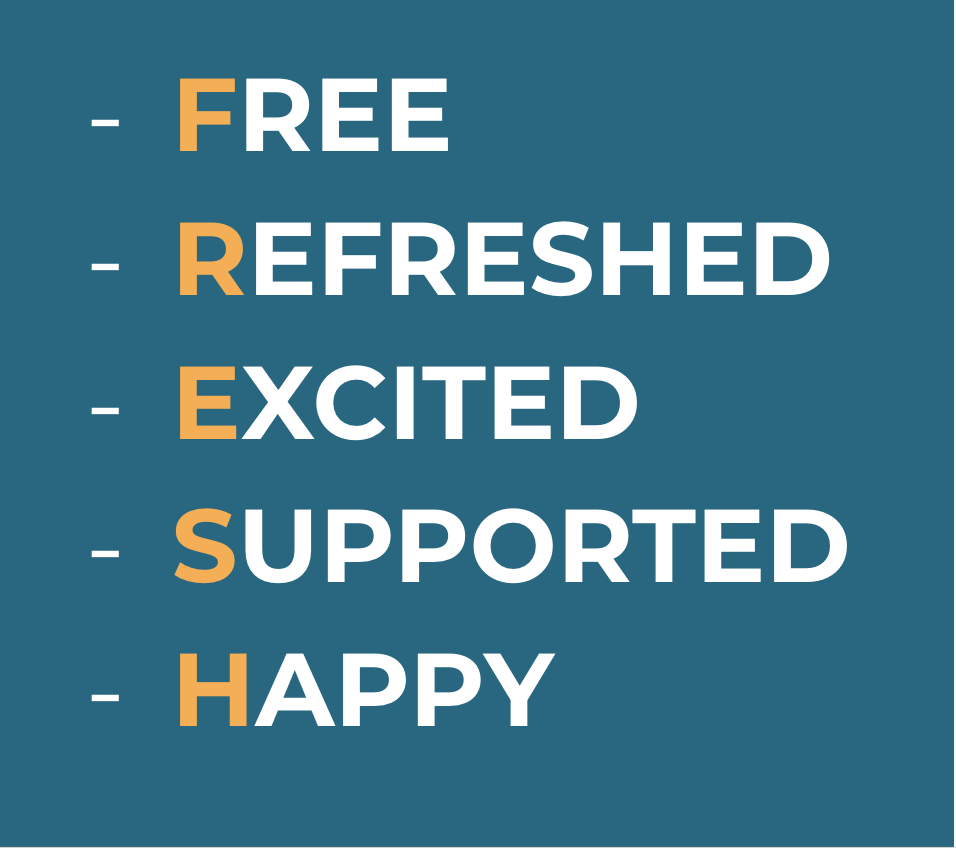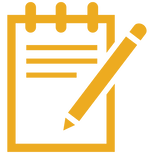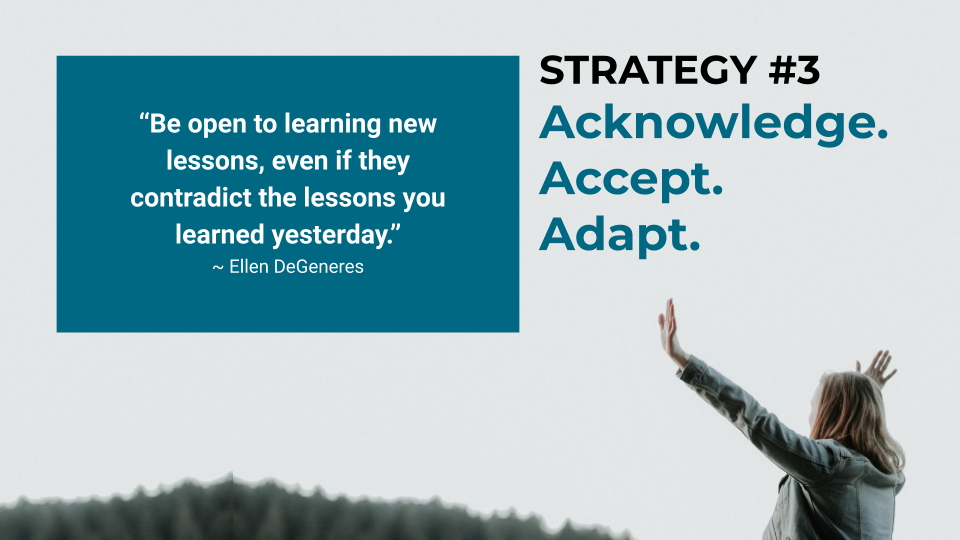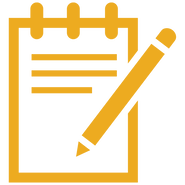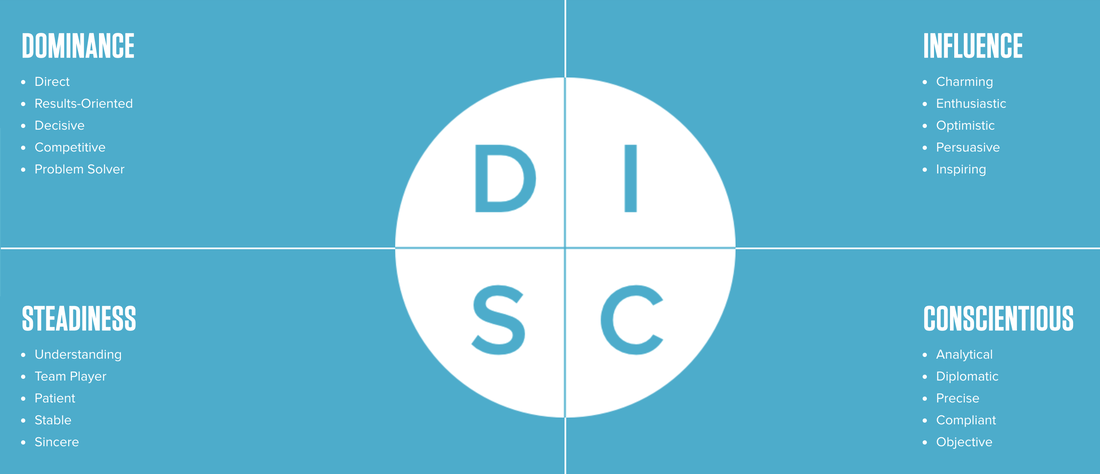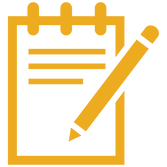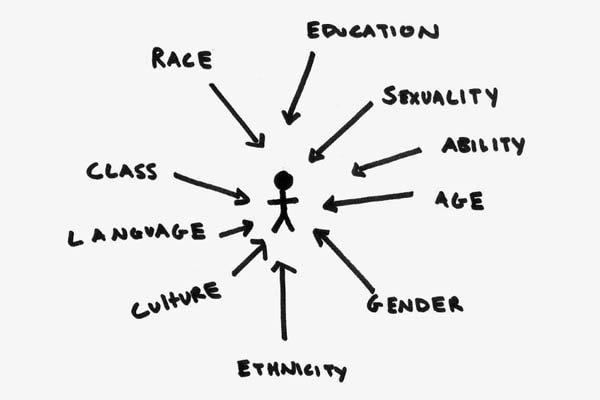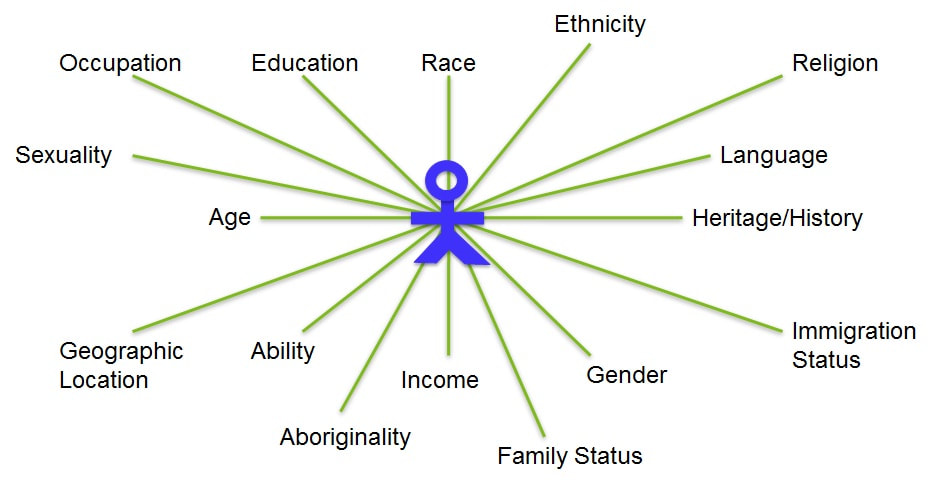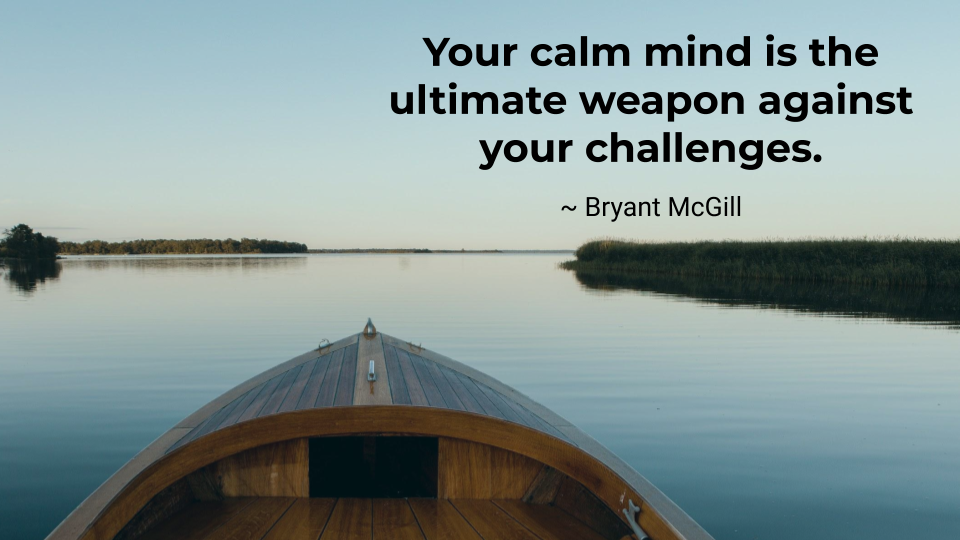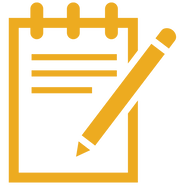ADVANCED ON PURPOSEAn educational blog with purposeful content. We welcome open and polite dialogue, and expect any comments you leave to be respectful. Thanks! Archives
May 2023
Categories
All
|
Back to Blog
Heal at 11:11, Heal for Life5/27/2020 3 MIN READ FOR IMMEDIATE RELEASE CONTACT: Meredith Curry, Owner & Principal Consultant of AdvancED Consulting, LLC mer @ advancedconsulting.org Over 20 Healers of Color From Across the Country Deliver Free Healing When It’s Needed Most Heal in Solidarity: Starting on Saturday, June 6, 2020, AdvancED Consulting, LLC and Surrendered Healing, solo entrepreneur women of color from the Bay Area, will offer a Virtual #PopUpHealingCenter for free for seven afternoons straight. What do we mean by healing? Well, does your heart hurt? Or your head? Does your bank hurt? Do any relationships hurt? Then you can use some healing! And this event has over 20 people ready to support your healing through movement, creativity, and mental enhancement. "11 is a 'master number' which signifies intuition, insight, and enlightenment. When paired together, 11 11 is a clear message from the universe to become conscious and aware" (truththeory.com). This is why every day from Saturday, June 6 through Friday, June 12, “Transform Through Covid-19” will start at 11:11 am with a grounding meditation to start the day led by Surrendered Healing Founder and Spiritual Healer, Adelina Tancioco. Next will be three 20-minute sessions from healers of color from across the country representing the Bay Area, Los Angeles, Fort Washington, and the Bronx. Each day will end at 12:45 pm with 15 minutes of rhythmic movement led by Meredith Curry, Owner of AdvancED Consulting, LLC, and music by Shanta Franco-Clausen, a.k.a. DJ Shugga Shay. “Our work is sacred and so are we,” shares Tovi Scruggs-Hussein, Educational Leader & Healer with Tici’ess, Inc. in Oakland, CA who will lead a session called “$tackin' for Spirit: Keeping Your Money Conscious, Connected , and Courageous.” We invite you to be a part of this virtual healing community by registering for “Transform Through Covid-19” and enjoying one day, or everyday of the week-long event. This is for you if:
To learn more and register, go to www.advancedconsulting.org/pop-up-healing-center. Read the profiles of the event speakers and explore nearly two dozen sessions. Fawad Akbar, Owner of Body Evolution in Newark, CA believes, “Two things define you. Your patience when you have nothing, your attitude when you have everything,” and he will share this with us in practice in his session “Full Body Workout with Body Evolution.” “Transform Through Covid-19” is proud to partner with AAPI Women Lead founders Dr. Connie Wun and Jenny Wun who will lead a day of Healing & Solidarity. “What is meant for you cannot be unmeant for you,” shares Jenny who will lead a session with her sister called “Healing & Solidarity.” The event also promotes a fundraiser to support the Liyang Network during COVID-19. 100% of contributions will go to services, resources, and supplies for the Lumad, the indigenous people of Mindanao, Philippines. “Lumad” means “native of the land” in Cebuano. In celebration of the Lumad and all Filipino cultures, there are healers offering sessions like "BAKS NAMAN! Self Care through Boxing;" "Dalawang Buslo, Two Baskets: Integrating Stress & Joy in the Present Moment;" and "Hilot Through Story." For more information about Transform Through Covid-19: A Virtual #PopUpHealingCenter with 21 Healers of Color or to arrange an interview with the co-hosts Meredith Curry and Adelina Tancioco, please contact Meredith directly at [email protected]. ### Meredith “Mer” Curry is the Owner and Principal Consultant of AdvancED Consulting, LLC. Mer’s mission is to empower businesses striving to solve the world’s most complex issues through thought-partnership, education, and operational leadership. She also seeks to uplift organizations run by and/or actively promoting the betterment of hxstorically disadvantaged groups like minorities and womxn. Mer works with entrepreneurs, nonprofit and education organizations to increase capacity organization-wide. She works with their leaders and professionals to enhance fund development, board management, programming, data analysis, Salesforce, and general operations strategies and processes. For more information see www.advancedconsulting.org or follow Mer on LinkedIn and Facebook.
0 Comments
Read More
Back to Blog
Transitioning to Remote Work3/18/2020 4 MIN READ In light of the disruptions caused by the coronavirus (COVID-19), many are finding themselves working remotely, getting laid off, having their hours reduced, and more. This article is focused on those who are able to continue working from home. For those of you who are looking for advice and resources because you cannot work from home, please Contact Me and let's take it from there. A recording of the Transitioning to Remote Work webinar on March 18 is available here (54:26). How should I tackle working from home?For whatever reason, we're working from home now. All hundreds of thousands of us. And we're all coming at this new reality from VERY different perspectives. Here are just a few of the perspectives I talk about on my webinar that goes with this Blog article. I'm sure there are many more where this came from.
Once we have reflected on who we are and where we're coming from, we should take a deep breath because we understand 1) our own level of comfort and acumen working remotely, 2) my company's level of comfort and acumen working remotely, and 3) my ecosystem's level of comfort and acumen working remotely. It's important to know these three things because then you will know the #1 thing: It is NOT 100% your responsibility to figure this out. It's only 1/3 of your responsibility. Now that you believe that, you can focus on where you have control, and the first place you have control is how you tackle remote work. For this I offer you: Mer's Top 3 Tips for Remote Work. For Tip #1 for Remote Work, I discuss Mindfulness. Here is what you need to know:
For Tip #2 for Remote Work, I share Mer's Tips for Over-Communicating. Some of these include:
For Tip #3 for Remote Work, I discuss Organization. A few ways to get even more organized than ever include:
Next, I offer: Mer's Top 3 Tips for Managing. For Tip #1 for Managing, I discuss Staying Connected. You will need to take advantage of tools like Salesforce, Quip, Slack, and more to make connection possible. You'll also need to be more strategic with your meetings, which could include:
For Tip #2 for Managing, I share how to Be Visible. You will need to develop and/or refine routines like:
For Tip #3 for Managing, I share how to Be Transparent with Mer's Tips for Over-Documenting. Some of these include:
Lastly, I would like to share: Mer's Top 10 Favorite Apps. Rather than go through them in detail in this article, you'll find their logos below. You can learn more about them in the AdvancED Toolbox and in my handout Transitioning to Remote Work: Resources. You can also Contact Me with any questions or to ask for recommendations. The first Transitioning to Remote Work webinar was hosted on Wednesday, March 18 at 6:00 pm PDT. Click here for the recording (54:26)! The next webinar is on Thursday, March 26 from 11:30 am to 1:30 PDT. Register on Eventbrite and join us, you can learn while you have your lunch!
Back to Blog
A Review of GDPR and CCPA12/9/2019 5 MIN READ This article is the 2nd in a series. Read the introduction article: "Why Data Privacy Matters." So you know what your data looks like. You know what it is used for. You have a sense of who touches it and who uses it. Now what? Now, you educate yourself on data privacy. If you have data, you need to protect it. I had the opportunity to speak to this on a webinar hosted by FormAssembly on August 21, 2019. I joined Maggie Tharp at FormAssembly to talk about the data privacy landscape in 2019, and evolving regulations and best practices. Check out the Webinar Recap: California Privacy and How It Affects You. On the webinar, Maggie and I discussed The General Data Protection Regulation (GDPR) as well as the California Consumer Privacy Act (CCPA) which will go into effect on January 1, 2020. As FormAssembly’s guest presenter, I spoke to the implications for nonprofit and educational organizations who may not have people or processes in place to specifically track data privacy and how it impacts organizations. In my Webinar Recap, I share some key insights that I shared on the webinar. As a follow up to their Data Privacy Deep Dive Webinar Series, FormAssembly recently published their white paper, State of Data Privacy in 2019. In this guide, they talk about the data privacy landscape in the United States, the new data privacy laws in other U.S. states, where businesses stand, and tips on better data stewardship. A realistic next step to prepare for CCPA is to have a discussion with the relevant leaders of your organization and determine your level of preparedness. Review FormAssembly’s white paper, State of Data Privacy in 2019 and give your organization a rating of Very Prepared, Prepared, Somewhat Prepared, or Not Prepared. Depending on what your team decides, make a plan to move your team to Prepared or Very Prepared. I’d like to share some highlights from the guide, and weave in some of my own best practices. These tips come from working with small to large, local to virtual organizations across California in developing and implementing data privacy business processes and protocols.
Read my next article “How You Can Protect Your Data” (under construction) for more tips and tricks to manage and protect your data. Want support developing a data governance strategy? Data governance helps organizations manage their stakeholder data and protect it from being abused, stolen, or lost. AdvancED can help you design an effective data governance strategy that will describe the steps to analyze, secure, store, and manage your organization’s stakeholder data. Schedule your free 20-min consultation now. Related articles
About Author: Meredith "Mer" Curry Mer has always had a passion for education and helping historically underrepresented groups achieve access and success to higher opportunities. She has consulted nonprofits, educational institutions, and businesses in addition to her volunteerism and mentorship of students.
Learn more about Mer at www.meredithcurry.com.
Back to Blog
Defining Your Strengths as a Leader Series: #2 Defining Your Emotional Intelligence Strengths11/4/2019 3 MIN READ I found a recommendation for “Emotional Intelligence 2” by Travis Bradberry & Jean Greaves. With the book came a new and enhanced online edition of “the world’s most popular emotional intelligence test,” The Emotional Intelligence Appraisal®. The Emotional Intelligence Appraisal® provides you with a complete picture of your emotional intelligence. This includes an understanding of:
This appraisal will ask you specific questions about your behavior. How you answer these questions is for your eyes only. A true reflection of your emotional intelligence skills depends on your willingness to accurately rate yourself. This requires a lot of thought into how you are in many situations, not just the ones you handle well. When you read each question, create a clear picture in your mind of how you are in different situations, then answer honestly how often you demonstrate the behavior in each question. Define Your Emotional Intelligence Strengths Activity Read about the Emotional Intelligence Appraisal - Me Edition. Consider if you would like to take this assessment (it costs less for the hardcover book than the online assessment!). If you decide to take it, put it on your calendar by blocking 2 hours and set a reminder for a few days before so that you do not reschedule it.
What if you decide not to take it? Reflect on a colleague or loved one in your life who could benefit from the activity and tell them about it! The accompanying report recommends that I begin practicing on one specific area, Social Awareness, and offers three strategies to nurture my skills in this area:
My Take-aways on the Emotional Intelligence Appraisal
Now that you’ve reviewed one assessment, take a look at Assessment #3 the StrengthsFinder by Gallup (stay tuned!). Related articles
About Author: Meredith "Mer" CurryMer has always had a passion for education and helping historically underrepresented groups achieve access and success to higher opportunities. She has consulted nonprofits, educational institutions, and businesses in addition to her volunteerism and mentorship of students.
Learn more about Mer at www.meredithcurry.com.
Back to Blog
4 MIN READ This article is the 2nd in a series. Read the introduction article "Defining Your Strengths as a Leader." I took DiSC through the Tony Robbins website thanks to social justice comrade and career coach Anthony Le’s recommendation. I’ve participated in a Tony Robbins seminar as a teenager, so to take something as an adult almost 20 years later was exciting! DiSC is an observable “needs-motivated” instrument based on the idea that emotions and behaviors are neither “good” nor “bad.” Rather, behaviors reveal the needs that motivate that behavior. Therefore, once we can accurately observe one’s actions, it is easier to “read” and anticipate their likely motivators and needs. DiSC provides your ADAPTED style and NATURAL style, represented as graphs and word sketches. As an example, for People, the words that indicate my needs, fears, and what’s observable are:
Define Your Strengths with DiSC Activity
What if you decide not to take it? Reflect on a colleague or loved one in your life who could benefit from the activity and tell them about it! My Behavior Style is Assessor. Key behavioral insights that stand out to me that I will need to keep in mind to strengthen my relationships are:
The insights I get to take home with me and contemplate as I move forward are lists of “Help Them Tos” adapted for different situations such as At Work, In Social Settings, and In Learning Environments. Lastly, you get a summary of your motivation which tags seven (7) Motivators as Very Low to Very High. My breakdown was:
Knowing that Altruistic motivation is my highest, key universal assets that stand out to me that I will need to keep in mind are:
My Take-aways on DiSC
Now that you’ve reviewed one assessment, take a look at Assessment #2 on Emotional Intelligence. Related articles
About Author: Meredith "Mer" CurryMer has always had a passion for education and helping historically underrepresented groups achieve access and success to higher opportunities. She has consulted nonprofits, educational institutions, and businesses in addition to her volunteerism and mentorship of students.
Learn more about Mer at www.meredithcurry.com.
Back to Blog
Defining Your Strengths as a Leader10/28/2019 4 MIN READ 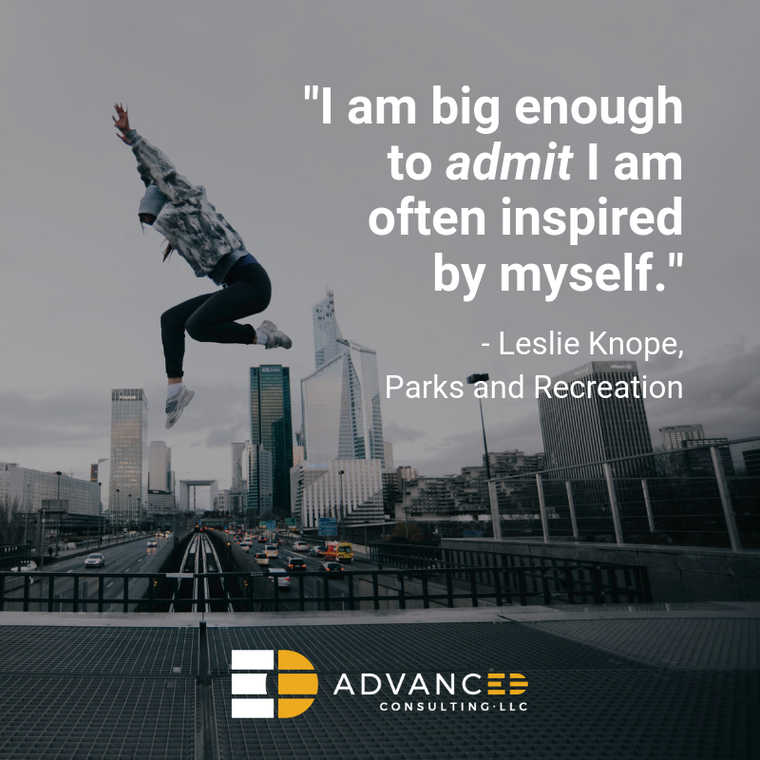 This article is the 1st in a series on "Breaking Knowledge Barriers". This article is the 1st in a series on "Defining Your Strengths as a Leader" I have read my fair share of what some might term “self-help” books. I like to think of them as “self-awaken” books. The “help” part in “self-help” alludes to something being broken that needs fixing. What I appreciate about the books I’ve read since I was little, as well as today, is that self-awaken books point to the strengths, potential, and inner wisdom deep inside of us, already alive and ready, yet often untapped and tucked away hidden from sight. This wisdom manifests as skills and intuition, and I’m keen on developing my ability to tap this wisdom. Self-evaluation is critical for me as a leader, as a manager of teams and projects, and as a woman of color. The Center for Creative Leadership reminds us in their report 7 Emerging Trends for Transformative Leaders that some managers may struggle with interpersonal relationships, affecting their ability to build and lead teams or adapt to change, which can lead to career derailment. To avoid this, “organizations must design programs that develop [managers’] self-awareness, political savviness, communication skills, and ability to influence others...skills that are essential to effectively heading a team.”
As a professional, whether you are an employee of a company or an entrepreneur, understanding your strengths and skill sets is key to building the confidence, resourcefulness, and grit to adapt to any situation. As human beings who have way more going on than just our jobs, you can bet that your personal, educational, emotional, societal, cultural, economical, and religious identities are often at play when you negotiate professional situations. Most of us do not know how these identities manifest themselves in our decisions, risk tolerance, and self-reliance. Most of us have comrades and loved ones we can turn to for advice and feedback, but our hearing is often screening and interpreting with the bias of that relationship and all of its power dynamics. So why take a personality assessment? Because we often don’t know the questions to ask. And even if we did, would we really answer honestly, free of unconscious bias, shame, guilt, regret, or fear? Define Your Strengths as a Leader Activity Take out a pad of post-its, ideally in two different colors (e.g. green and yellow). Find a blank wall or space where you can lay out two sets of post-its and set aside a total of one hour.
We know from the Council of National Psychological Associations for the Advancement of Ethnic Minority Interests “Test bias is a primary issue of selecting and using testing and assessment instruments with racial/ethnic minority groups. Past research has shown that tests can produce misleading results with culturally different groups in terms of slope and intercept (or unfairness) bias.” Thus, if you are a person of color, you will need an assessment that will address and consider this intersection of your identity, as well as many others, if you are to feel good about doing anything at all with the results. I’d like to give you a review of a few assessments because, 1) I have taken them in more than one sitting or format, and 2) I have heard from and worked with others who have taken one or a combination of assessments as part of developing themselves professionally at work. I have written a separate blog post for each assessment in this "Defining Your Strengths as a Leader" series. Click here to go to Assessment #1 on DiSC. Related articles
About Author: Meredith "Mer" CurryMer has always had a passion for education and helping historically underrepresented groups achieve access and success to higher opportunities. She has consulted nonprofits, educational institutions, and businesses in addition to her volunteerism and mentorship of students.
Learn more about Mer at www.meredithcurry.com.
Back to Blog
4 MIN READ This article is the 5th and final one in a series. Read the introduction article: "Breaking Knowledge Barriers Series: Womxn of Color in the Workplace." If you Acknowledge who you are, Accept the strengths and challenges in front of you, and develop a risk tolerance to Adapt to situations as they come, you’re in a pretty good place. But let’s go back to the first question that I had to ask myself - What Can I Give Up? This is why I say, Finish Strong. Finish whatever is holding you back with strength. This might be just what you need to move forward on something else. Be intentional about finishing whatever it is, and focus on ending it with a lesson to validate the effort.
spreadsheets and trade them in for Quickbooks Self-Employed or something:
Once you know the owner, size, and the priority of this project you want to START, you can rumble with vulnerability as the great Brené Brown advises in Dare to Lead. You can let go of the need for this project to look and feel a certain way if you’re going to delegate it. You can let go of the anxiety of thinking about it right now if you know it’s not going to come up again for several weeks. I bet you will also realize that you have mad delegation and prioritization skills as well! Lastly, Back Yourself Up by building a strong bench of people that you can rely on to support you. If you can set up a formal advisory or committee, awesome. If you can find a mentor, wonderful. If you can join a community like a local commission or network like the Women’s Networking Alliance or the Asian Pacific American Leadership Institute, way to step it up! The most important part is getting positive reinforcement and honest guidance from outside of yourself, while also building your inner monologue of positive vibes and affirmations. And whenever possible, build a diverse bench. It should have people that look like you and people that don’t look like you. It should have people that will agree with you on some things and people who will disagree with you on some things. Stack your bench with people who will look out for your best interest, which is not the same as Yes-people.
You now have all of the strategies you need to begin to tackle any knowledge barriers or general challenges you may have face as a woman in business, education, law, medicine, etc. You already have the will and the grit to move forward; you only need to take the first step. Know that I believe in you and that I am taking those steps with you. Sincerely, Mer Related articles
About Author: Meredith "Mer" CurryMer has always had a passion for education and helping historically underrepresented groups achieve access and success to higher opportunities. She has consulted nonprofits, educational institutions, and businesses in addition to her volunteerism and mentorship of students.
Learn more about Mer at www.meredithcurry.com.
Back to Blog
3 MIN 30 SEC READ This article is the 4th in a series. Read the introduction article: "Breaking Knowledge Barriers Series: Womxn of Color in the Workplace." How many of us are still making decisions today because of something that happened a month ago? A failure a year ago? A mistake or misjudgment a relationship ago? Instead, I recommend, “Be open to learning new lessons, even if they contradict the lessons you learned yesterday.” Our intersections, our identities, are chock full of lessons we learned yesterday that we are still holding onto. They might be holding us back and we may mistakenly think they’re pushing us forward. ACKNOWLEDGE who you are, how your identities intersect and play out in your everyday. How your heritage/history, education, geography, and income all impact the access you have to the knowledge you seek today. You acknowledge that the path behind you and in front of you is rife with challenges and misjudgment and misunderstanding. So who are YOU today, and what strengths and skills do you have in your toolbox to move forward from this moment?
That is to ask yourself what are you GOOD at, what are your strengths, and how does that play out in your life. Conversely, what does it look like when you are not applying those strengths in your life, and how do they manifest as fears or you getting in your own way or your unhappiness? ADAPT by starting from a place of strength in the knowledge of who you are and gratitude for all that you have ACHIEVED to get to this moment, rather than shame or regret. There’s a TED Talk on the 5 Top Indicators for Startup Success by Bill Gross with Idealab, and chief of them is Timing, followed by Team, Idea, Business Model, and Funding. What this tells us is that Timing is the largest factor in the success of any business, so it behooves you to always be present, open-minded, and have a fresh perspective and confidence to tackle whatever comes, when it decides to come, because we have very little control over timing. RECALL YOUR STRENGTHS and let them nourish and remind you that you can do it, whatever IT is, when the time comes. Now it's time for you to finish strong and start fresh, and we teach you how to do this with our final strategy. Click here to go to Strategy #4. Related articles
About Author: Meredith "Mer" CurryMer has always had a passion for education and helping historically underrepresented groups achieve access and success to higher opportunities. She has consulted nonprofits, educational institutions, and businesses in addition to her volunteerism and mentorship of students.
Learn more about Mer at www.meredithcurry.com.
Back to Blog
2 MIN READ This article is the 3rd in a series. Read the introduction article: "Breaking Knowledge Barriers Series: Womxn of Color in the Workplace." No matter how old we are, how successful we are, how much we’ve achieved, who loves us and who is loved by us, there are challenges that we still face as individuals. I believe that our experiences and identities can tell us a lot about WHY. Identity Intersections explore how issues of race, sexual orientation, and mental health intersect with one another (Psychology Today). We are unique in how we identify with our identities, and how those intersect to create our experience, value systems, and personalities. It is healthy and critical to acknowledge and accept your intersections as contributing factors to your success as well as challenges. It is valuable and worth your energy to assess how these play out in your decision making, management, and principles. Often, we don’t even realize that our intersections bias our perceptions not just of others, but ourselves and what we are capable of or deserving of. The two images below offer a few combinations of identities that you can reflect on Please understand that the outcomes of this strategy will vary depending on the person as we are all different. It is important to take what you need and let go of what you do not. Throughout your life journey, your Identities Map may look a little different given that you will change. You may have to re-identify yourself and that is just fine because change is inevitable. This next strategy in this series will help you embrace it. Related articles
About Author: Meredith "Mer" CurryMer has always had a passion for education and helping historically underrepresented groups achieve access and success to higher opportunities. She has consulted nonprofits, educational institutions, and businesses in addition to her volunteerism and mentorship of students.
Learn more about Mer at www.meredithcurry.com.
Back to Blog
2 MIN READ This article is the 2nd in a series. Read the introduction article: "Breaking Knowledge Barriers Series: Womxn of Color in the Workplace." The Journal of Positive Psychology published a study in June showing that 15 minutes of meditation has the same effects as a full day of vacation. One step into a mindfulness or meditation practice is to practice breathing exercises. Mindful breathing is an incredible, free, readily accessible tool to help you recall the strategies I share with you throughout my Blog.. Next time you’re facing your shame, take some deep breaths. When you have a small win to celebrate, take some deep breaths. Appreciate who you are. Take a precious moment for yourself. Practice Diaphragmatic Breathing aka Belly Breathing or Abdominal Breathing. As part of meditation practice, breathing exercises are known to help manage the symptoms of irritable bowel syndrome, depression and anxiety, sleeplessness, and more. Breathing leads to a CALM MIND, and with a calm mind, you are more equipped to respond with authenticity, armed with your natural strengths and intuition. Lastly, another benefit of breathing and lowering your heart rate and stress levels, is so that you can activate KINDNESS more. More for yourself. More for others. More for the world. Consider a free app like UCLA Mindful by the UCLA Bedari Kindness Institute (recently highlighted in LA Times!). "Your calm mind is the ultimate weapon against your challenges." ~ Bryant McGill Now that you have learned how to relax and be mindful, you will have enough energy to pursue Strategy #2 on Identifying Yourself. Trust, it is never easy to look at "the [womxn] in the mirror." Related articles
About Author: Meredith "Mer" CurryMer has always had a passion for education and helping historically underrepresented groups achieve access and success to higher opportunities. She has consulted nonprofits, educational institutions, and businesses in addition to her volunteerism and mentorship of students.
Learn more about Mer at www.meredithcurry.com. |
Photo from CityofStPete

 RSS Feed
RSS Feed
